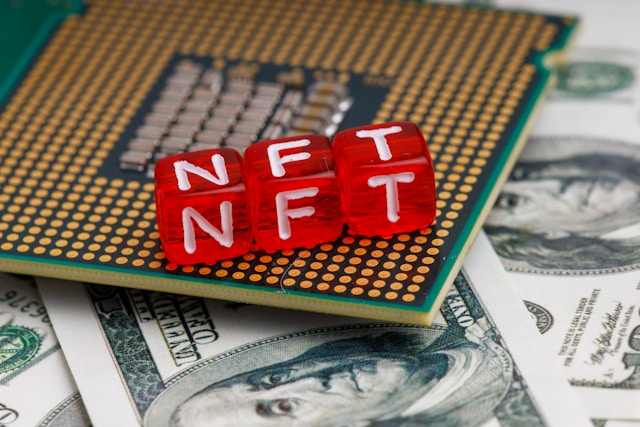
- November 15, 2023
- Personal Finance Advisor
- 0
Risk Adjusted Returns is a crucial concept in the field of finance and investment. It refers to the financial gains or profits from an investment, taking into account the level of risk involved. In other words, it’s a measure that helps investors understand the return of an investment relative to the risk taken to achieve those returns. This concept is vital because all investments come with a certain degree of risk, and it’s essential to consider this risk when evaluating the potential returns. Risk-adjusted returns provide a more accurate picture of an investment’s performance by factoring in the risk element. It allows investors to compare different investment opportunities on a level playing field, regardless of their risk levels. Understanding risk-adjusted returns can help investors make more informed decisions and choose investments that align with their risk tolerance and return expectations.
Importance of Risk-Adjusted Returns in Investment Decision Making
The importance of Risk-Adjusted Returns in investment decision making cannot be overstated. It is a crucial metric that allows investors to compare the potential returns of different investments while taking into account the level of risk involved. By considering the risk-adjusted returns, investors can make more informed decisions about where to allocate their capital. It helps them to identify investments that offer the highest potential return for a given level of risk, or alternatively, the lowest risk for a given level of return. This is particularly important in portfolio management, where the goal is to maximize returns while minimizing risk. Furthermore, risk-adjusted returns can help investors to diversify their portfolio, as it provides a more accurate comparison of different asset classes. Therefore, understanding and utilizing risk-adjusted returns is a key aspect of successful investment decision making.

How to Calculate Risk Adjusted Returns: A Step-by-Step Guide
Calculating risk-adjusted returns is a crucial step in assessing the potential profitability of an investment, considering the risk involved. The process involves several steps. First, you need to calculate the expected return of the investment. This can be done by multiplying the potential outcomes by their respective probabilities and summing the results. Next, calculate the standard deviation of the returns, which measures the volatility or risk associated with the investment. Then, subtract the risk-free rate (the return on a risk-free investment, such as a government bond) from the expected return to get the risk premium. Finally, divide the risk premium by the standard deviation to get the risk-adjusted return. This value, also known as the Sharpe Ratio, allows investors to compare the potential returns of different investments, taking into account the level of risk involved. It’s important to note that a higher Sharpe Ratio indicates a better risk-adjusted return.
Comparing Investments Using Risk Adjusted Returns
Risk-adjusted returns are a crucial tool for comparing the potential returns of different investments. This metric allows investors to evaluate the performance of various assets on a level playing field by factoring in the risk involved. For instance, two investments may offer the same potential return, but if one carries a higher level of risk, its risk-adjusted return will be lower. This comparison helps investors make informed decisions based on their risk tolerance and investment goals. It’s important to remember that a higher risk-adjusted return doesn’t necessarily mean a better investment. It simply indicates that the investment offers a higher return relative to its risk. Therefore, investors should consider other factors such as their financial goals, investment horizon, and risk tolerance when comparing investments using risk-adjusted returns.
Tools and Software for Calculating Risk Adjusted Returns
In the modern financial landscape, numerous tools and software have been developed to simplify the process of calculating risk-adjusted returns. These digital solutions are designed to provide investors with a more accurate and efficient way to assess the potential returns of their investments, considering the associated risks. Tools such as Excel have built-in functions that can be used to calculate risk-adjusted returns, including the Sharpe Ratio and the Sortino Ratio. On the other hand, specialized financial software like Morningstar Direct, Bloomberg Terminal, and Riskalyze offer more advanced features for risk-adjusted return calculations, including data analysis, portfolio optimization, and risk assessment capabilities. These tools not only save time and effort but also minimize the chances of errors in calculations. However, it’s crucial to understand the underlying principles and formulas these tools use to ensure accurate interpretation of the results.
The Role of Risk Adjusted Returns in Portfolio Management
The role of risk-adjusted returns in portfolio management is crucial as it helps investors to make informed decisions. It is a measure that allows investors to compare the potential returns of different investments considering the risk involved. This is particularly important in portfolio management, where the goal is to maximize returns while minimizing risk. By using risk-adjusted returns, portfolio managers can assess the performance of various investments in the portfolio, taking into account their respective risk levels. This can guide them in deciding which investments to hold, sell, or buy more of. It also aids in diversification, as it helps identify investments that offer high returns for a given level of risk, or the least risk for a given level of return. Thus, risk-adjusted returns serve as a valuable tool in creating a balanced and efficient portfolio.
Case Studies: Real-World Applications of Risk Adjusted Returns
Risk-adjusted returns are not just theoretical concepts; they are applied in real-world scenarios to make informed investment decisions. For instance, consider two mutual funds, A and B. Fund A may have higher returns than Fund B, but if Fund A also has higher volatility, it may not necessarily be a better investment. By calculating the risk-adjusted returns, investors can compare the two funds on an equal footing, taking into account both the potential returns and the associated risks. Another example is in portfolio management, where risk-adjusted returns are used to optimize the allocation of assets. By considering the risk-adjusted returns of different asset classes, portfolio managers can balance the desire for high returns with the need to limit risk. These real-world applications highlight the practical importance of risk-adjusted returns in finance and investment.

Common Mistakes to Avoid When Calculating Risk Adjusted Returns
Risk-adjusted returns are a crucial tool for investors, but they can be misleading if not calculated correctly. One common mistake is neglecting to consider all types of risk. Investors often focus on market risk, but other types like credit risk, liquidity risk, and operational risk can also impact returns. Another error is using inappropriate time frames for analysis. Short-term fluctuations can distort the true risk-return relationship, so it’s important to use a long-term perspective. Additionally, investors often misuse or misunderstand statistical measures like standard deviation and beta. These measures have limitations and should be used in conjunction with other risk assessment tools. Lastly, investors may fail to adjust returns for inflation, which can significantly erode real returns. By avoiding these common mistakes, investors can make more accurate and informed decisions based on risk-adjusted returns.
Expert Advice: Tips and Strategies for Maximizing Risk Adjusted Returns
Risk-adjusted returns are a crucial metric in investment decision-making. They provide a more comprehensive picture of an investment’s performance by factoring in the risk involved. Experts suggest several strategies for maximizing risk-adjusted returns. Firstly, diversification is key. Spreading investments across different asset classes can help mitigate risk and potentially increase returns. Secondly, understanding the risk-reward trade-off is essential. Higher potential returns often come with higher risk, so it’s important to find a balance that aligns with your risk tolerance. Thirdly, continuous monitoring and rebalancing of your portfolio can help maintain an optimal risk-reward ratio. Lastly, using reliable tools or software for calculating risk-adjusted returns can ensure accuracy and help in making informed decisions. Remember, the goal is not to eliminate risk, but to manage it effectively to maximize returns.
Future Trends: The Evolving Role of Risk Adjusted Returns in Finance
The role of risk-adjusted returns in finance is continually evolving, driven by advancements in technology, changing market dynamics, and the increasing complexity of investment instruments. In the future, we can expect more sophisticated tools and algorithms to calculate risk-adjusted returns, providing investors with more accurate and real-time data. This will enable them to make more informed investment decisions. Additionally, as the global financial market becomes more interconnected and volatile, the importance of risk-adjusted returns in portfolio management and investment decision-making will likely increase. Investors and financial institutions will need to consider not just the potential returns, but also the associated risks, in a more comprehensive and nuanced manner. Furthermore, with the rise of sustainable and impact investing, risk-adjusted returns may also start to incorporate environmental, social, and governance (ESG) risks, reflecting a more holistic approach to investment risk management.
















































